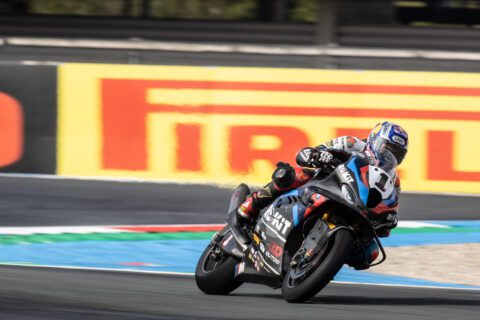Gary Nixon was a flame-haired, square-jawed Oklahoman who achieved folk-hero status as one of America’s most successful crossovers from dirt to road, while at the same time acquiring huge popularity in the UK because of his wins at Daytona and success with the US team in the famous Transatlantic Match Race series.
Nixon was one of the few people who could speak without, apparently, moving his jaw. The Nixon mumble, delivering words in an Oklahoman drawl, was to many people, particularly on this side of the pond, completely incomprehensible.
But he could ride. Brought up on short track and half-mile dirt ovals, mostly dominated by Harley-Davidsons, Nixon brought Triumph many of its great successes in the sixties and seventies. This was when the ‘circus’ would move from state to state, taking in county shows, state fairs as well as the big American Motorcycle Association events.
They covered thousands of miles per week in pickup trucks, a life brilliantly chronicled by journalist Joe Scalzo in his book Racer which followed Nixon for a season as he went from one event to the next, crossing desert so hot they would fry eggs in their hub caps. For most this was a hand-to-mouth existence and where necessary they lived off the land.
They were a tough band but he was the toughest. For three years he rode with an 18in steel pin holding his left leg together. Eventually his injuries meant he had to concentrate on what the Yanks call ‘pavement’ racing and his successes at Daytona and elsewhere. But by that time he had won the AMA national title in 1967 and ’68.
Only when you became a ‘works’ rider did you make what could be called real money and that was when the sport was dominated by Harleys ridden by legends like Bart Markel with Triumph and BSA snapping at their heels. Young Nixon was snapped up by Triumph, and with the emergence of hard track racing via events like Daytona, which started on the beach, they started to make big inroads.
To Europeans some of it looked a bit odd with some of the racers still having upright handlebars and the riders often continuing to wear their big track boots bearing a close resemblance to ‘Totectors.’ By then the Japanese were starting to dominate US bike sales backed by presence in sport through, among others a teenage sensation called Kenny Roberts and Australian veteran Kel Carruthers.
BSA Triumph were struggling and they hired a marketing hot shot Peter Thornton for one last throw of the dice in America. It was he who hired Mike Hailwood and Paul Smart for Daytona to run alongside the likes of Nixon, by now a multi-AMA champion, to counter the Honda threat headed by Dick Mann.
But his biggest promotion was to provide and finance the US team in the first of Transatlantic Series which was a BSA Triumph event created by Motor Circuit Developments Chief Chris Lowe and ex-MCN reporter Gavin Trippe, by now a big-time race promoter and motorcycle newspaper owner in California.
Nixon was the star turn along with the likes of Gene Romero and Dave Aldana. They had never known anything like it. Far removed from pick-up trucks on dusty turnpikes, they were now ensconced in five star hotels in London, the swinging city. Opportunities for fun abounded.
Trippe writes: “At the very first Match Races we were lodged in luxury near Hyde Park. Nixon bet Aldana that he couldn’t persuade one of the many lovely ladies that they were observing from their balcony to join them in the suite upstairs. The cheeky little Mexican/American duly won the bet but on the way up to the room who should step into the lift with this odd couple plus ladies but Kirk Douglas, world star of Western and
Biblical epics.
“The girls obviously attracted the stars’ attention and as they got out of the lift, the boys gave Douglas a cheeky grin and said: ‘Get your own.’ This sort of behaviour continued on and off the track throughout the entire series from Brands Hatch through Mallory Park to Oulton Park.”
If he made much money through works rides with Triumph, Kawasaki, Suzuki and Yamaha, he never kept it. Trippe recounts asking him jokingly: “Gary, at 65, you must be collecting Social Security by now?”
“Yep,” came the response, accompanied by a puffing of the chest.”$800 dollars right into my bank account.” On hearing that Trippe was getting more than him, the competitive spirit which had
gained him so much success drove an immediate visit to his own Social Security office in an attempt to get
a raise.
Nixon made great friends with the likes of Paul Smart, a team-mate in the US Kawasaki team, and Barry Sheene who seemed to have a wardrobe full of Nixon T-shirts. This, in part, was due to Nixon marrying an English girl, Mary, from Walderslade near Chatham, whom he met when she was working as an au pair in the States and who survives him with his daughter Kary Ann. But also the bond between competitive people living on the edge.
Gary Nixon, otherwise known as Old Red, died in August 2011. He was 70.


![Shane Byrne, Monstermob Ducati, 2003 WorldSBK, action [Gold & Goose]](https://bikesportnews.com/wp-content/uploads/2025/07/Shane-Byrne-Monstermob-Ducati-2003-WorldSBK-action-Gold-Goose-480x272.jpg)







